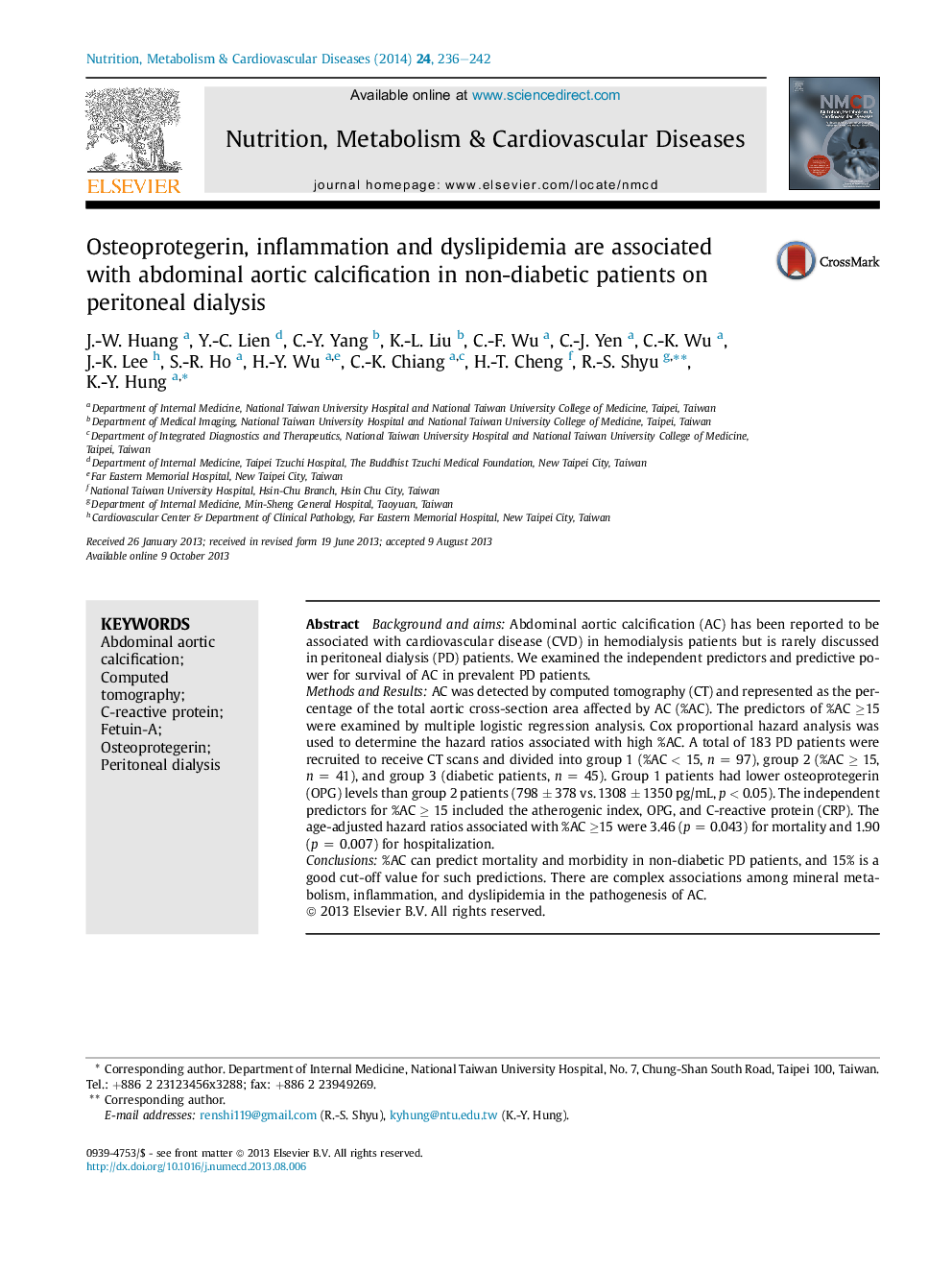| Article ID | Journal | Published Year | Pages | File Type |
|---|---|---|---|---|
| 5996710 | Nutrition, Metabolism and Cardiovascular Diseases | 2014 | 7 Pages |
Background and aimsAbdominal aortic calcification (AC) has been reported to be associated with cardiovascular disease (CVD) in hemodialysis patients but is rarely discussed in peritoneal dialysis (PD) patients. We examined the independent predictors and predictive power for survival of AC in prevalent PD patients.Methods and ResultsAC was detected by computed tomography (CT) and represented as the percentage of the total aortic cross-section area affected by AC (%AC). The predictors of %AC â¥15 were examined by multiple logistic regression analysis. Cox proportional hazard analysis was used to determine the hazard ratios associated with high %AC. A total of 183 PD patients were recruited to receive CT scans and divided into group 1 (%AC < 15, n = 97), group 2 (%AC â¥Â 15, n = 41), and group 3 (diabetic patients, n = 45). Group 1 patients had lower osteoprotegerin (OPG) levels than group 2 patients (798 ± 378 vs. 1308 ± 1350 pg/mL, p < 0.05). The independent predictors for %AC ⥠15 included the atherogenic index, OPG, and C-reactive protein (CRP). The age-adjusted hazard ratios associated with %AC â¥15 were 3.46 (p = 0.043) for mortality and 1.90 (p = 0.007) for hospitalization.Conclusions%AC can predict mortality and morbidity in non-diabetic PD patients, and 15% is a good cut-off value for such predictions. There are complex associations among mineral metabolism, inflammation, and dyslipidemia in the pathogenesis of AC.
